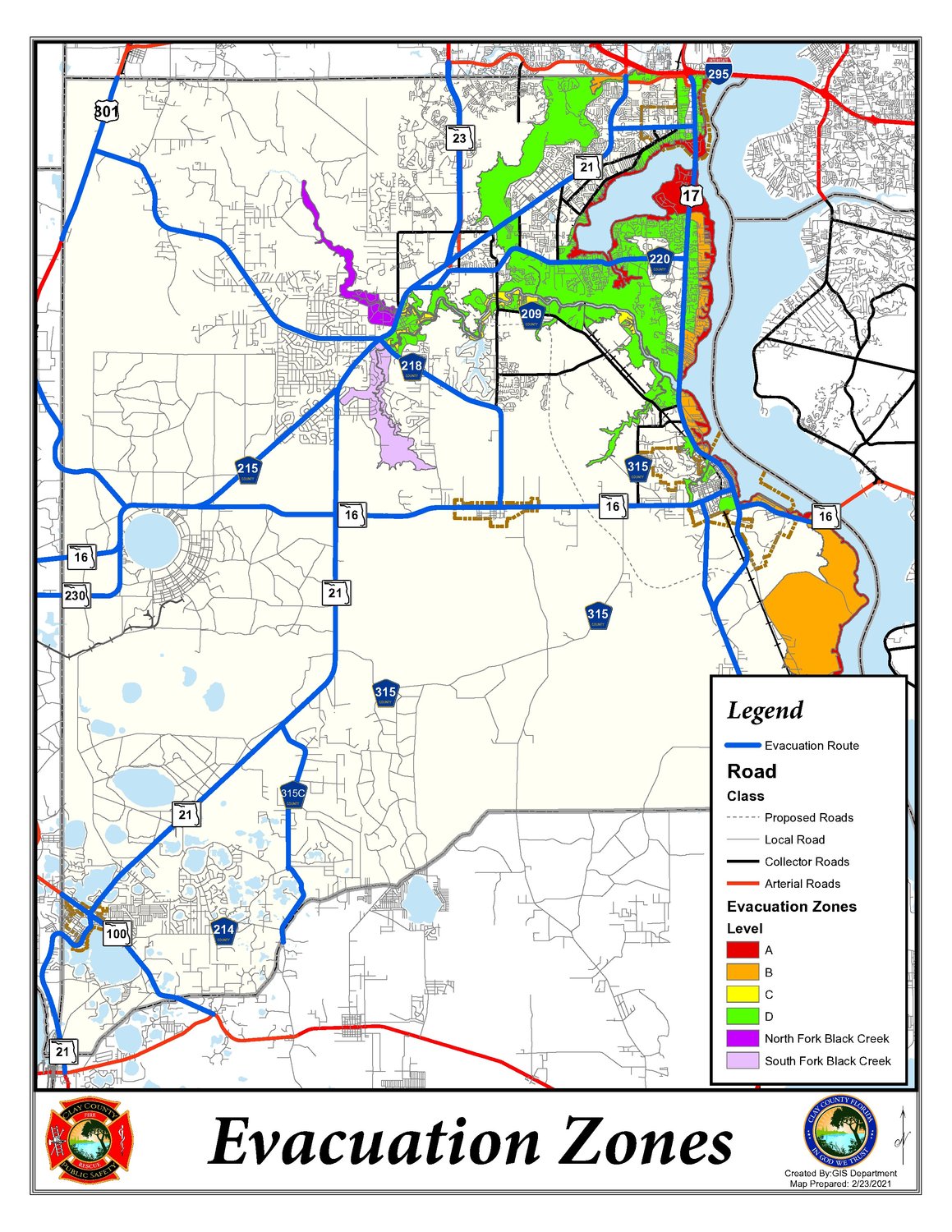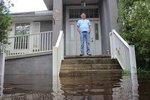2021 Hurricane Season: Are you ready?
Emergency Management: Hurricane preparation should start long before the storm
CLAY COUNTY – It’s that time of year when Clay County residents begin to watch the weather forecasts in anticipation of that swirling mass of wind, water and destruction known as a …
This item is available in full to subscribers.
Attention subscribers
To continue reading, you will need to either log in to your subscriber account, or purchase a new subscription.
If you are a current print subscriber, you can set up a free website account and connect your subscription to it by clicking here.
If you are a digital subscriber with an active, online-only subscription then you already have an account here. Just reset your password if you've not yet logged in to your account on this new site.
Otherwise, click here to view your options for subscribing.
Please log in to continueDon't have an ID?Print subscribersIf you're a print subscriber, but do not yet have an online account, click here to create one. Non-subscribersClick here to see your options for subscribing. Single day passYou also have the option of purchasing 24 hours of access, for $1.00. Click here to purchase a single day pass. |
2021 Hurricane Season: Are you ready?
Emergency Management: Hurricane preparation should start long before the storm
CLAY COUNTY – It’s that time of year when Clay County residents begin to watch the weather forecasts in anticipation of that swirling mass of wind, water and destruction known as a hurricane. Floridians know all too well that you don’t have to be in the direct path of a storm to feel the effects.
The National Oceanic and Atmospheric Administration predicted an above-average hurricane season. Experts recently revised their original forecast to include a 60% chance of an above-normal season, a 30% chance of a near-normal season and a 10% chance of a less than normal season. While NOAA doesn’t expect 2021 to match the historic level of storms from a year ago, it believes there will 13 to 20 named storms with winds of 39 mph or greater, with six to 10 becoming hurricanes with winds of 74 mph or greater.
“Now is the time for communities along the coastline as well as inland to get prepared for the dangers that hurricanes can bring,” said Secretary of Commerce Gina Raimondo. “The experts at NOAA are poised to deliver life-saving early warnings and forecasts to communities, which will also help minimize the economic impacts of storms.”
President Joe Biden said Monday he’s going to direct $1 billion in emergency spending to help communities prepare for hurricanes and other extreme weather events.
Last year, the United States dealt with 22 weather and other natural disasters with losses greater than $1 billion each. The disasters, which included wildfires, hurricanes and snowstorms, had a combined cost of nearly $100 billion.
The season officially started until June 1, storm season already started with Tropical Storm Ana in the Central Atlantic and a cluster of tropical-like storms formed last weekend off the coast of Texas.
It’s never too early to get ready for a possible natural disaster, according to John Ward, the Director of Emergency Management in the county.
“We should be prepared year-round,” he said.
An important first step is joining the text alert list from the county. When there’s an emergency, the county will issue an alert on cellphones, and every resident should sign up for the service, Ward said.
“I know a lot of people don’t like getting woke up, but we only use that for an emergency – missing kids, severe thunderstorms, tornado warnings, those kinds of things that are issued for that geographic area,” he said. “As always, keep a preparedness kit in case we have a storm or an order to evacuate. All of our information that our residents need is at the alert.claycountygov.com website. They can get a lot of the preparedness information there.”
One of the most devastating storms in Clay County history was Hurricane Irma in 2017. While the NOAA said the storm had weakened to a Category 1 storm when it came within 100 miles of the Northeast Florida coastline. And while Irma didn’t meet NOAA’s standards for wind speed and millibars of air pressure to be categorized as a hurricane in Clay County, the storm still did significant flooding damage throughout the county, particularly along the Black Creek that crested at 28.5 feet. The previous high for Black Creek was 24.3 feet in 1923.
According to county and state officials, at least 1,200 homes in the county sustained flooding damage.
“That’s a problem. Since Dora [in 1964], there’s some question since Dora we haven’t had a sustained tropical storm,” Ward said. “A lot of people think because it was named, like Tropical Storm Debbie or Hurricane Beryl or Hurricane Irma, that they’ve lived through one – and they really haven’t.”
Even if a storm is more than 1,000 miles away, once it’s named it’s too late to make changes to insurance policies, Ward said.
“A lot of people don’t check into that until it’s too late,” he said.
Once a storm is imminent, it’s probably too late to safely hunker down.
To help Florida residents get ready for hurricane season, Gov. Ron DeSantis announced a tax-free holiday on storm supplies from May 28 through June 6. Items that can be purchased tax-free include reusable ice packs, candles, flashlights, lanterns, gas and diesel fuel containers, batteries (not including automobile and boat batteries), radios, tarps, tie-downs and portable generators which cost $1,000 or less.
Hurricane Tips
The Atlantic hurricane season runs from June 1 to Nov. 30 every year, so now is the time to prepare ahead of the storm season. Here are some helpful tips to get you and your loved ones ready.
Stay Informed
Your first line of defense is to stay informed. The Federal Emergency Management Agency has developed an app that will send real-time alerts via the National Weather Service. The app can be viewed at https://www.fema.gov/about/news-multimedia/mobile-app-text-messages.
The National Weather Service office in Jacksonville will announce any real-time weather updates from their official @NWSJacksonville Twitter and NWSJacksonville Facebook sites.
For even more local information, sign up for Clay County-specific emergency alerts to be sent to your mobile device or home phone with Alert Clay from Clay County Emergency Management. To sign up, visit https://www.claycountygov.com/community/emergency-management/alert-clay.
Make an Emergency Plan
If you do not have an emergency plan, make one today. The Clay County All-Hazards Preparedness Guide is a great place to start at https://www.claycountygov.com/home/showdocument?id=1434. Remember to consider the needs of your pets, or any special medical or dietary needs your family may have.
Floridians are encouraged to have at least seven days of supplies on hand. These include food, water, medicine, batteries, pet food and anything special that you or your family need every day.
Know your Evacuation Zone
If ordered to evacuate, do not delay. Every minute you wait will result in significantly longer travel times as traffic congestion worsens. Make hotel or motel reservations before you leave, and make sure that your vehicle is full of fuel. Consider downloading the Florida 511 app or the Waze app to help determine the best route.
The Clay County evacuation zone map can be found at https://www.claycountygov.com/home/showdocument?id=4050.
Get Ready
Review your important documents and make sure to have them handy, especially your insurance paperwork. Make digital copies, but keep them password protected.
Verify that your insurance is current. Make a list of valuable items and take inventory of the items in your refrigerator and freezer, as some insurance policies cover food loss claims in the event of a power outage.
Get tech ready. Charge your cellphones, portable charging stations, computers, tablets and other devices. Grab your charging cords if you need to evacuate or shelter.
Fill any medical prescriptions and have medical equipment ready to go prior to the storm.
Create a continuity plan for your business.
Strengthen your home. Bring in any outside furniture, lawn ornaments and other loose items. Clean your gutters and drains, and consider installing hurricane shutters.
This year is still different
Like last year, the coronavirus pandemic has added a complication to hurricane preparedness. Verify if local shelters will be open and if they have capacity restrictions. If you do need to evacuate to a shelter, be sure to bring items to help protect you and your loved ones from COVID-19, including hand sanitizer, cleaning supplies and at least two face coverings a person.













